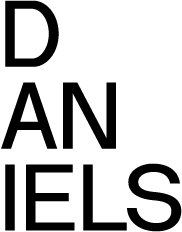"Piercing the Screen of the Vegetable Kingdom: Remarks on Infrared" with Charles Stankievech, Daniels Faculty Visual Studies
-
Room 103, 230 College Street
Following the lecture, audience members are invited to continue the conversation with the speaker in the Graduate Student Lounge, located in the lower level of 230 College Street.
The chromatic has a strange duplicity and if I may be permitted such language among ourselves: a kind of double hermaphroditism. a strange claiming, connecting, mingling, neutralizing, nullifying, etc., and furthermore a demand on physiological, pathological, and aesthetical effects which remains frightening…
-Johann Wolfgang von Goethe, A Theory of Colours, 1810
With a significantly slower life than images constructed by photojournalism, images in the artworld can consider problematic imagery from an oblique angle that strategically allows for a different temporality of seeing.
The typical typological differences between the documentary image and the art image are based on boundaries normally drawn between effect/affect or fact/fiction, but this is a misconception that art is more emotional or manipulative than press images or that ideological narratives are the exclusive strategy of propaganda. Both forms of the image can evoke despair or dazzle with spectacle, sublimate into icons or reveal the structure of the everyday. Rather their difference fundamentally functions within the realm of speed: the life cycle of the periodical is faster than the arc of the artworld. Infrared photography, in particular, pushes the notion of slowness into the materiality of light, for when we look at such false-colour representations, technically speaking, the only difference is their subtle shift in wavelengths: slower oscillations of electromagnetic energy exuding from decaying matter.
Piercing the Screen follows a historical intertwining of the infrared and photography projected on six screens: astronomy, camouflage detection, spirit photography, espionage, environmental sciences and forensics.
Charles Stankievech is a Canadian artist whose research has explored issues such as the notion of “fieldwork” in the embedded landscape, the military industrial complex, and the history of technology. His diverse body of work has been shown internationally at the Louisiana Museum, Copenhagen; Palais de Tokyo, Paris; Haus der Kulturen der Welt, Berlin; MassMoca, Massachussetts; Musée d’art contemporain de Montréal; Canadian Centre for Architecture; and the Venice Architecture and SITE Santa Fe Biennales. His lectures for Documenta 13 and the 8th Berlin Biennale were as much performance as pedagogy while his writing has been published in academic journals by MIT and Princeton Architectural Press. His idiosyncratic and obsessively researched curatorial projects include Magnetic Norths at the Leonard & Bina Ellen Gallery, Concordia University and CounterIntelligence at the Justina M. Barnicke Gallery, University of Toronto. From 2010-2011 (and again currently from 2014-15) he was hired as a private contractor for the Department of National Defence where he conducted independent research in intelligence operations under the rubric of the CFAP. He was a founding faculty member of the Yukon School of Visual Arts in Dawson City, Canada and is currently an Assistant Professor in the Daniels Faculty of Architecture, Landscape and Design at the University of Toronto. Since 2011, he has been the co-director of the art and theory press K. in Berlin.
Daniels Sessions aims to explore new and alternative viewpoints on architectural practice and research. The series features speakers who present unconventional perspectives and work from both inside and outside of the discipline. Daniels Sessions aims to provoke thought and generate discussion in a less formal setting. Following the lecture, audience members are invited to continue the conversation with the speaker in the Graduate Student Lounge, located in the lower level of 230 College Street.

